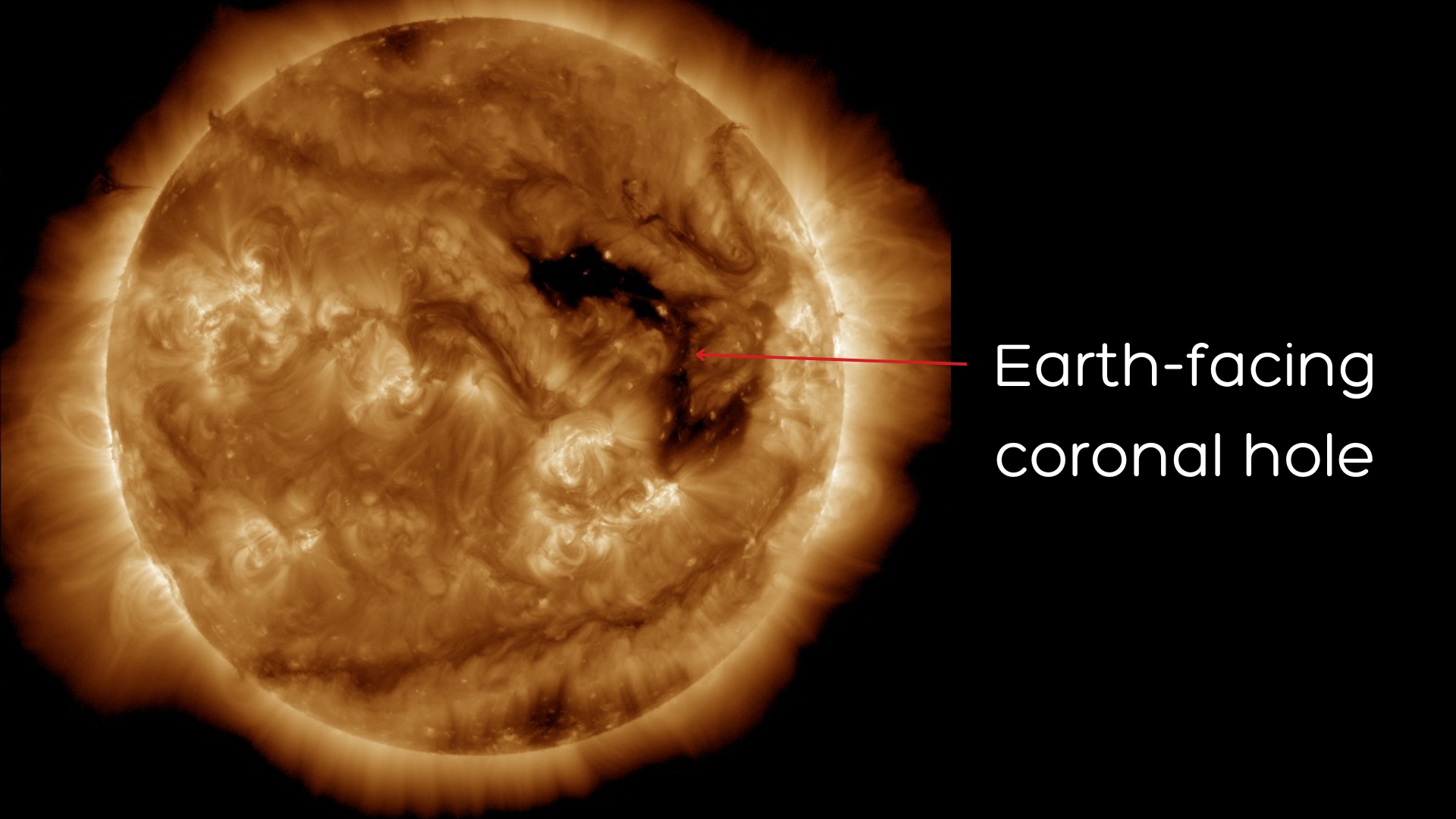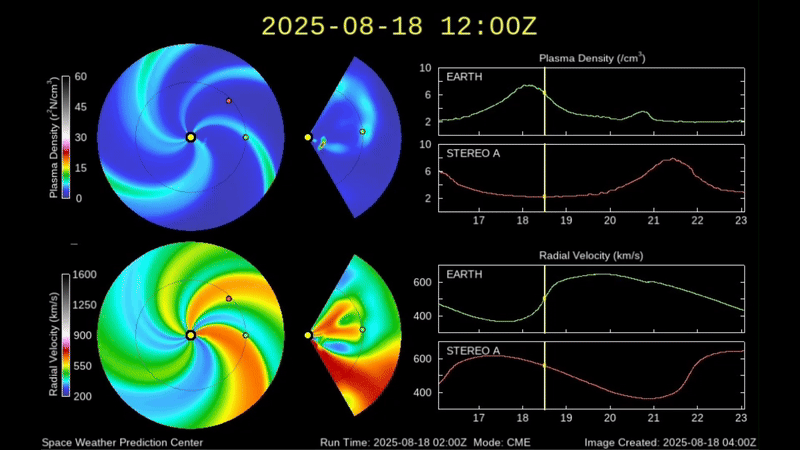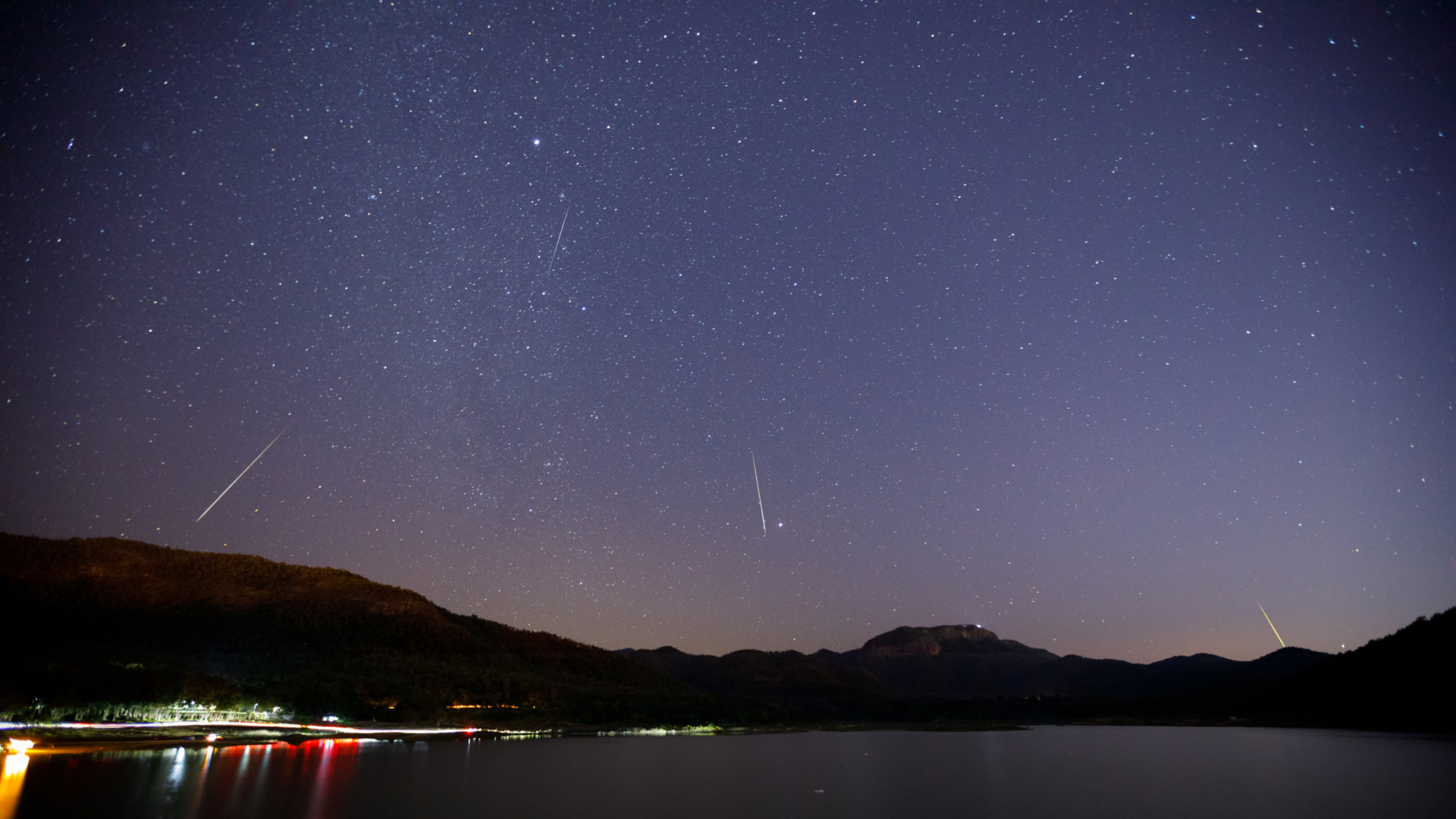Northern lights may be visible in these 10 states overnight Aug. 19-20
Auroras may be visible from Alaska to Washington as an incoming speedy solar wind could spark geomagnetic storm conditions overnight.
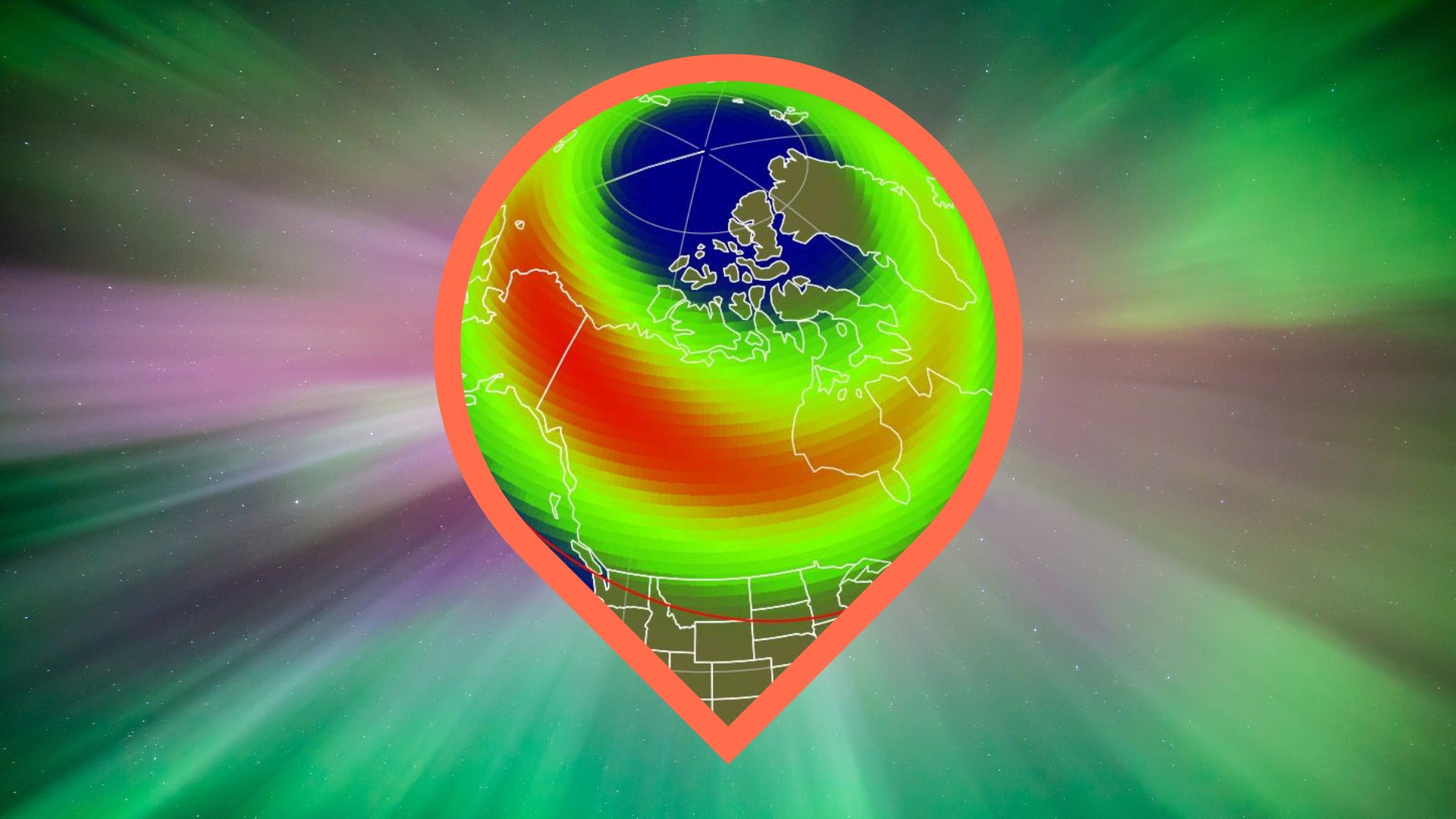
The northern lights could illuminate skies overnight tonight Aug. 19-20, thanks to a fast-moving stream of solar wind that may spark geomagnetic storm conditions, potentially triggering visible auroras across 10 states, according to the National Oceanic and Atmospheric Administration (NOAA).
Forecasters from NOAA's Space Weather Prediction Center (SWPC) and the U.K. Met Office predict a chance of minor (G1) geomagnetic storm conditions tonight, with further possible aurora enhancements in the days to come.
You can keep up with the latest forecasts and geomagnetic storm warnings with our aurora forecast live blog.
What's causing the aurora activity?
A large coronal hole is currently facing Earth, ejecting a fast-moving stream of solar wind in our general direction. Coronal holes are open regions in the sun's magnetic field, which allow solar wind to escape more easily.
The high-speed solar wind stream is forecast to buffet Earth's magnetic field tonight, raising the potential of sparking minor geomagnetic storm conditions.
Adding to the potential, a coronal mass ejection (CME) may graze Earth on Aug. 19 or 20, according to the U.K. Met Office. NOAA models suggest we could receive a glancing blow on Aug. 20.
Therefore, the chance of auroras tonight is far from ruled out.
Breaking space news, the latest updates on rocket launches, skywatching events and more!
When is the best time to look?
NOAA predicts the Kp index, a measure of geomagnetic activity, will reach around Kp 3.67 today, with a chance of peaking at Kp 5 on Aug. 20 (G1 — minor geomagnetic storm conditions) between 11 a.m. and 5 p.m. EDT (1500 to 2100 GMT). (The Kp index ranges from 0 to 9; the higher the number, the stronger the auroral activity and the farther from the poles it can be seen.)
While this peak is expected during daylight hours for both the U.S. and Europe — not ideal for aurora viewing — isolated periods of G1 storming are still likely to occur throughout Aug. 19 and Aug. 20, according to NOAA. That means auroras may still appear during the overnight hours tonight, especially if geomagnetic conditions hold or intensify.
Where are the northern lights visible tonight?
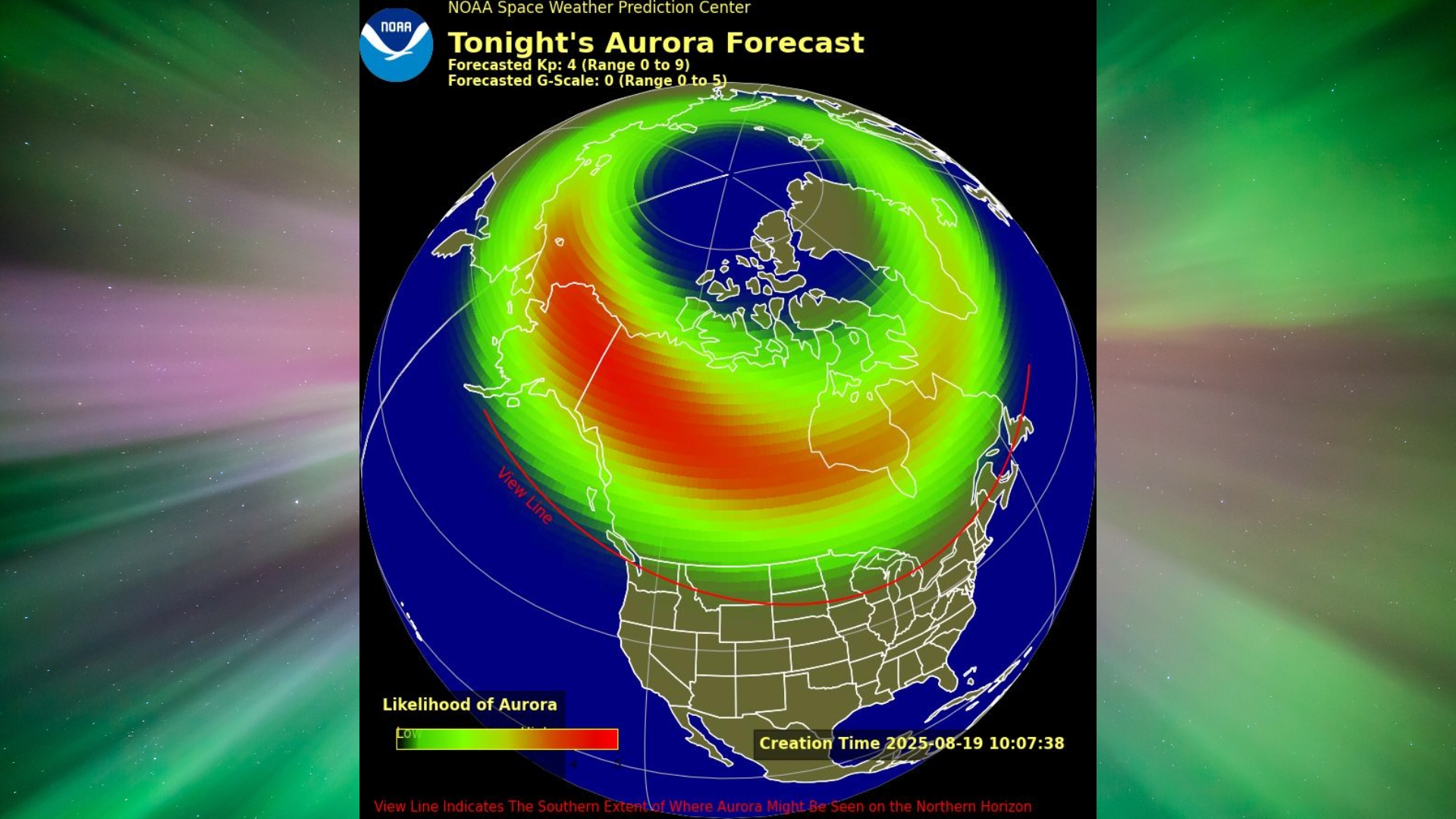
Based on the NOAA's updated aurora forecast map, the following 10 U.S. states appear fully or partially above the aurora view line. They are roughly ordered from most likely to least likely to see the northern lights based on proximity to the auroral oval and how much of each state is within or near the forecast zone.
States that could see the northern lights tonight
- Alaska
- North Dakota
- Montana
- Minnesota
- Wisconsin
- Michigan
- Maine
- South Dakota
- Idaho
- Washington
As always, remember that auroras can be highly unpredictable. Even if your state is within the view line, clear skies, low light pollution, a good view to the north and a little bit of luck are essential for catching a glimpse of the lights.
Northern Hemisphere aurora forecast courtesy of the Met Office
How can I see the northern lights from where I live?
If you're in one of the 10 U.S. states listed above, here's how to give yourself the best chance of seeing auroras:
- Head to a dark location far from city lights.
- Find a north-facing view with a clear horizon.
- Look up around midnight to 2 a.m. local time, but keep watch as soon as skies darken.
- Be patient. Auroras often come in waves and can appear faint at first.
We recommend downloading a space weather app that provides aurora forecasts based on your location. One option I use is "My Aurora Forecast & Alerts," available for both iOS and Android. However, any similar app should work well. I also use the "Space Weather Live" app, which is available on iOS and Android, to get a deeper understanding of whether the current space weather conditions are favorable for aurora sightings.
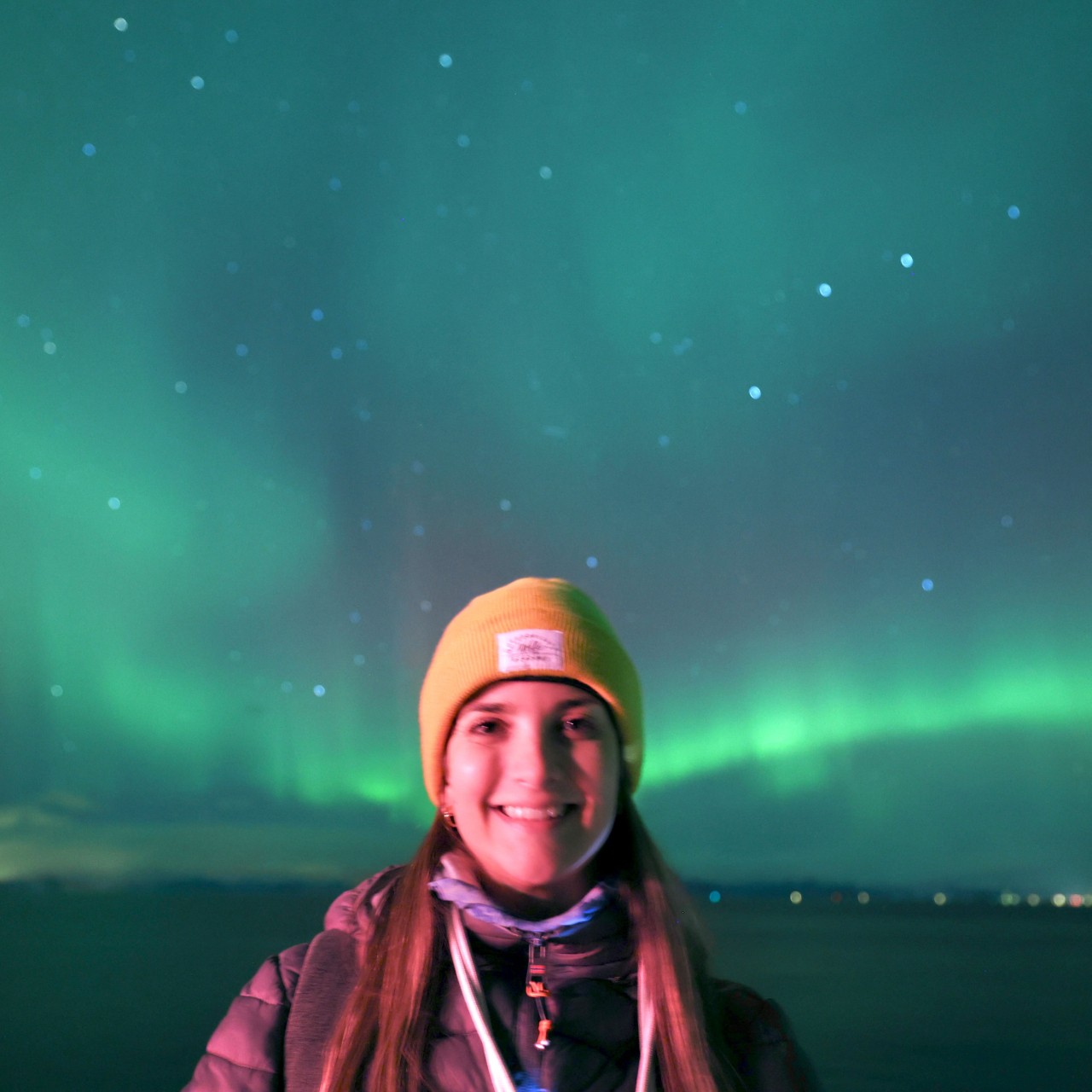
Daisy Dobrijevic joined Space.com in February 2022 having previously worked for our sister publication All About Space magazine as a staff writer. Before joining us, Daisy completed an editorial internship with the BBC Sky at Night Magazine and worked at the National Space Centre in Leicester, U.K., where she enjoyed communicating space science to the public. In 2021, Daisy completed a PhD in plant physiology and also holds a Master's in Environmental Science, she is currently based in Nottingham, U.K. Daisy is passionate about all things space, with a penchant for solar activity and space weather. She has a strong interest in astrotourism and loves nothing more than a good northern lights chase!
You must confirm your public display name before commenting
Please logout and then login again, you will then be prompted to enter your display name.
